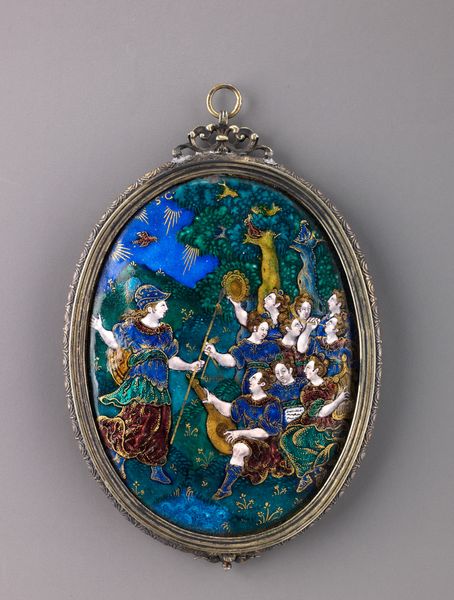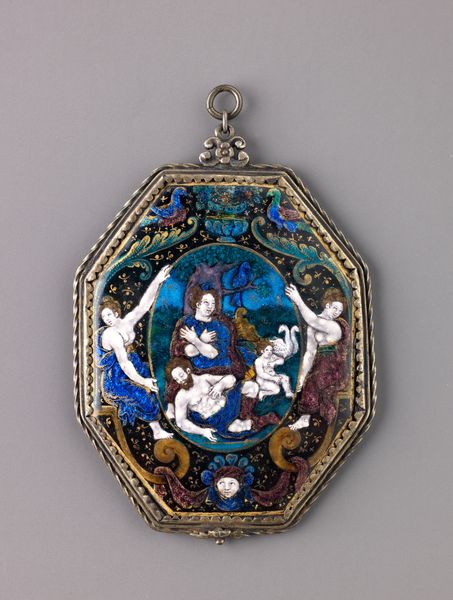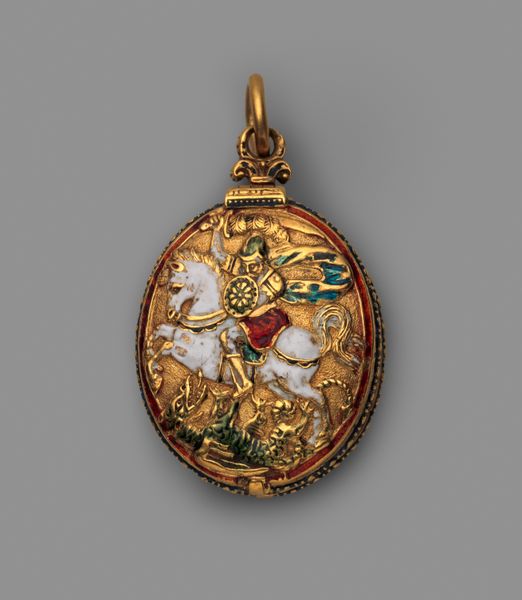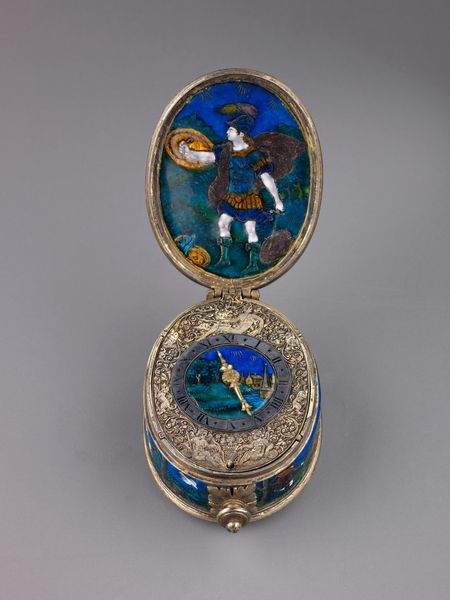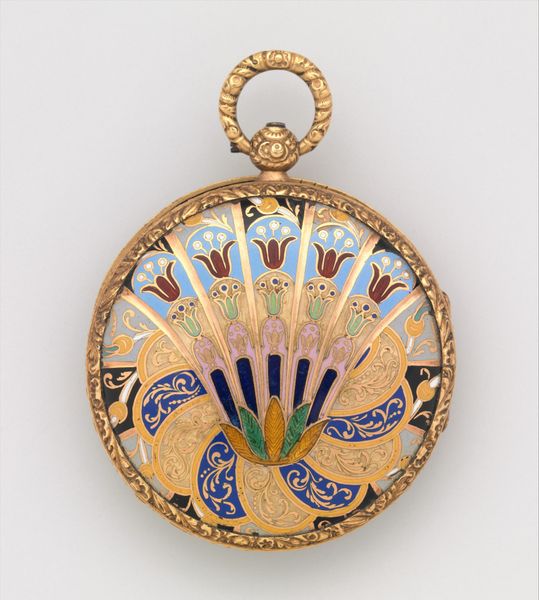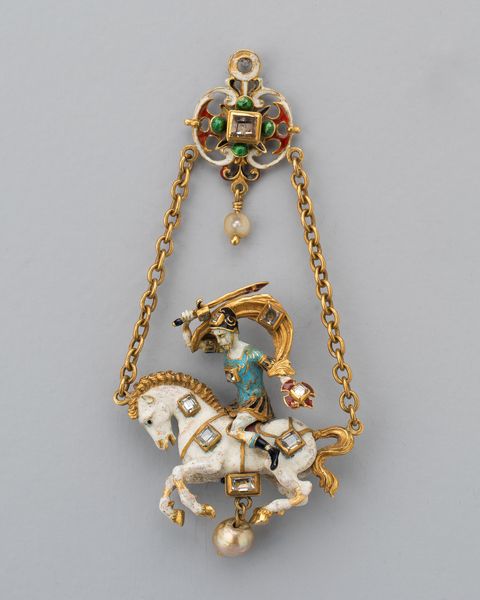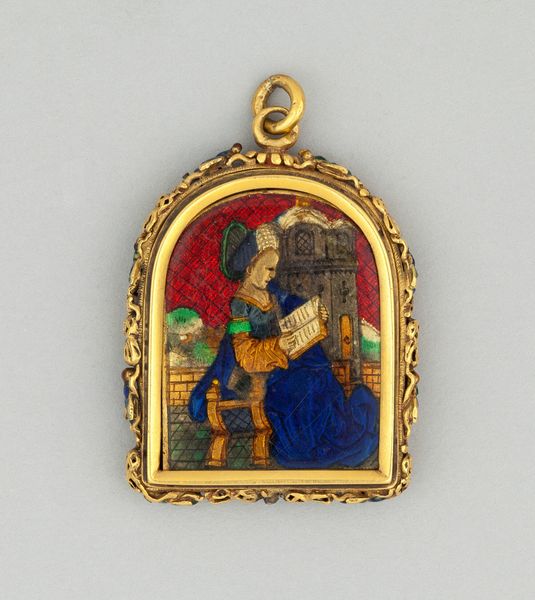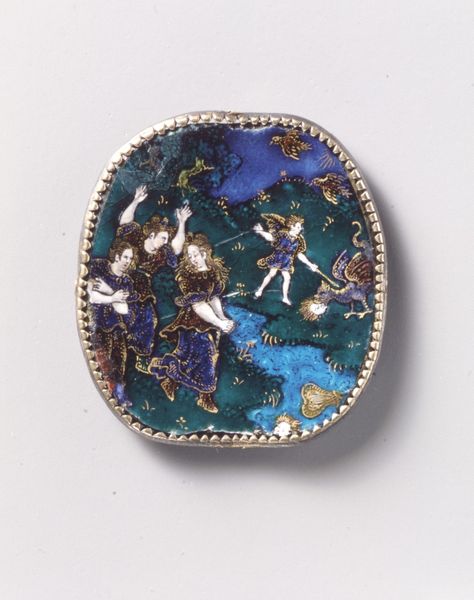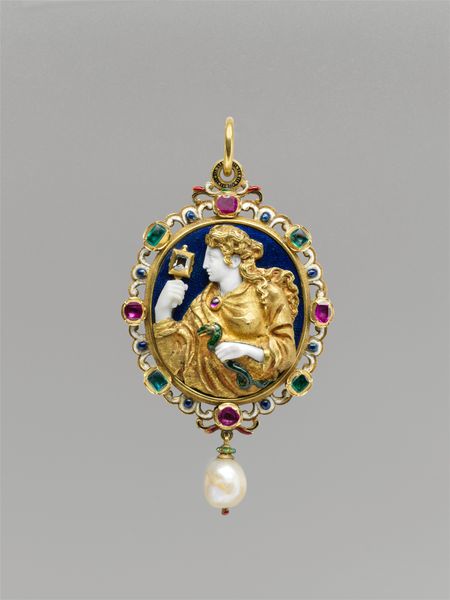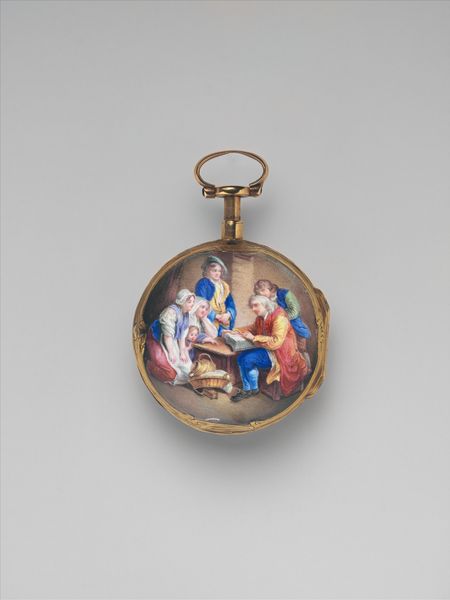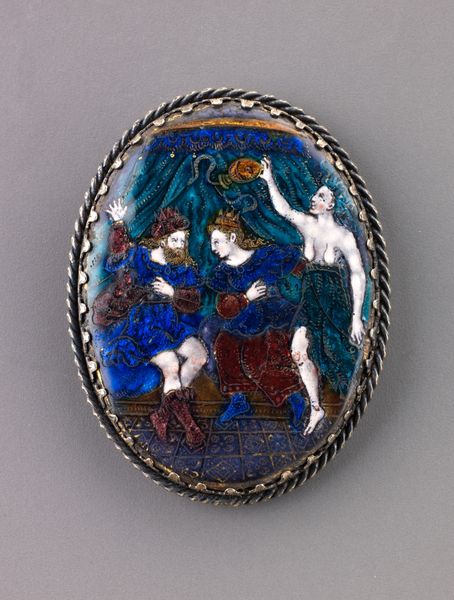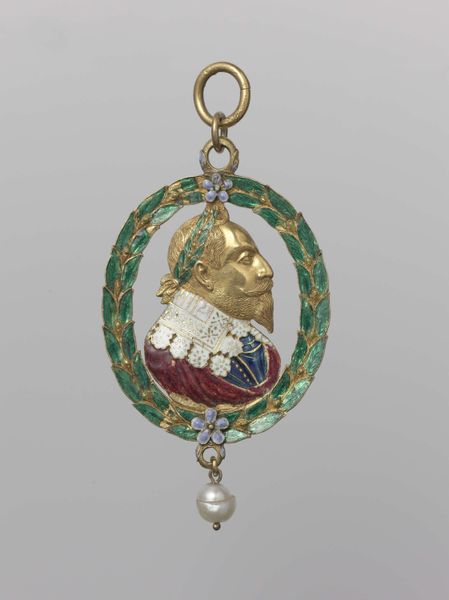
sculpture, enamel
#
portrait
#
mannerism
#
figuration
#
sculpture
#
enamel
#
history-painting
#
decorative-art
#
miniature
Dimensions: Overall: 1 7/8 × 1 3/8 in. (4.8 × 3.5 cm)
Copyright: Public Domain
Curator: Allow me to introduce a piece titled "Watch," crafted between 1615 and 1630, and attributed to the skilled hand of David Ramsay. It’s currently held in the Metropolitan Museum of Art's collection. Editor: Well, my first impression is how strikingly the artist employed color within the oval frame. There’s something incredibly evocative in that juxtaposition of cool blues and greens with the figures' ruddy complexions. Curator: Indeed. Considering its history, this ornamental watch reflects both technological advancement and aristocratic tastes of the Jacobean era in England. Watches were transitioning from novelties to status symbols. Editor: I see Mannerism reflected here, definitely. Observe the elongated figures, and the self-conscious display of skill. It’s not just about portraying a scene, but flaunting artistic ingenuity. It's decorative art aiming higher. Curator: Precisely. Ramsay, as a watchmaker to the King, would've been catering to a clientele interested in pieces showcasing both artistry and craftsmanship. Its function as timekeeping is almost secondary to its symbolic value as a display of wealth and education. Editor: Let’s talk about that scene—is it a known mythological tale? The hunter aiming, the figure reclining, potentially wounded? What statement is being made? It's an allegory, certainly, or perhaps a moment lifted from some romantic history. Curator: The narrative could represent several classical sources involving a hunt, possibly alluding to themes of mortality, destiny, and the hunt as a metaphor for life’s pursuits and challenges. Editor: The medium contributes to its impact, too. Enamel work offers a jewel-like quality, intensifying the colors and providing incredible detail in miniature. One must consider how that reflects broader society; it speaks to value placed on objects as both functional and refined things. Curator: Viewing art, it's too easy to get caught up in our present-day biases. Considering “Watch” within its time invites reflection upon time itself, a common theme during the 17th century. Editor: Agreed, by investigating formal construction, medium and historical roots we can move beyond mere aesthetic evaluation. It's an elegant lesson in intertwining art, utility, and power.
Comments
No comments
Be the first to comment and join the conversation on the ultimate creative platform.
